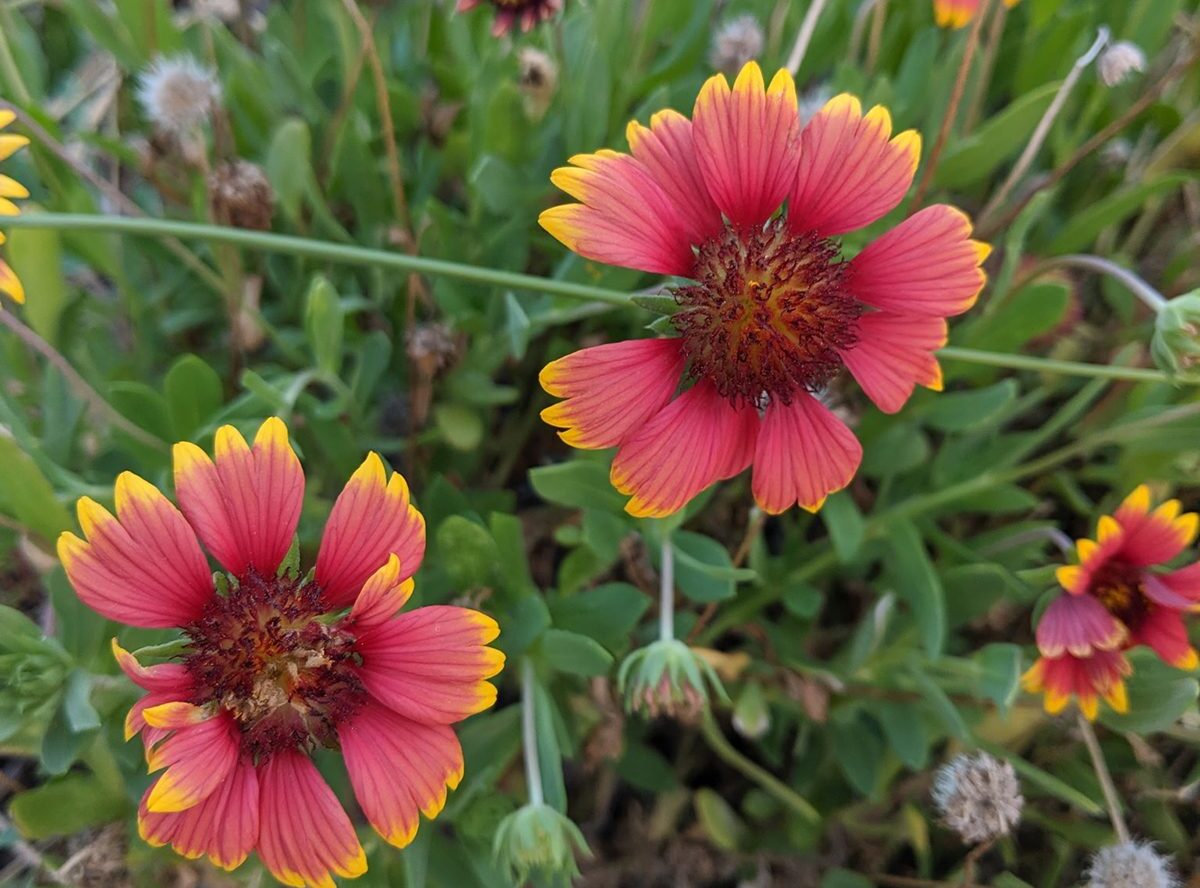I have often encouraged Marco Island residents to become better stewards of our land by learning good horticultural practices and to learn to identify and remove invasive, exotic plants from our landscapes, vacant lots and natural areas.
Many nonnative plants have been introduced accidentally or on purpose as garden plants or agricultural crops. Some of these nonnative plants have naturalized or spread on their own into our natural areas. When these plants spread extensively and displace native plants, they become invasive and cause damage to the native ecosystem.
You must manage natural areas to control these invasive species and minimize damage to native vegetation and soil. It takes time and caution to clear these natural areas of invasive species. Current methods being used to manage these nonnative plants include manual removal, mechanical removal, physical controls, herbicides and biological control. Each control can be used independently or in combination with one another.
The spread of invasive vegetation can be reduced by educating the public and local governments on the identity and control of these invasive plants. It is the responsibility of those who are aware of the problems caused by invasive nonnative plants to educate others about their impact and control to prevent further ecological damage of natural ecosystems.
With all that said I have compiled a list of some plants commonly found in our landscapes, vacant lots or even still sold in the local nurseries. If they spread by seed try to remove them entirely or if they spread by an aggressive root system be sure they don’t spread into any natural areas nearby. It is best that you don’t purchase them from the local nursery if you find them for sale.
Sword or Boston Fern (Nephrolepis cordifolia) – This common house plant will spread and form dense stands when planted in the landscape or allowed into a natural area.
Sansevieria or Mother-in-law’s-tongue (Sansevieria hyacinthoides [L.] Druce) – Another common house plant which loves the soil and climate of South Florida. When planted in the landscape it produces a fast growing, dense population with extensive rhizome roots.
Pothos (Epipremnum pinnatum [L.] Engl. cv Aureum) – When this houseplant is planted in the landscape or even placed in a pot and left for the summer while the owner is up North, covers the ground and tree trunks completely taking over the area.
Agave or Century Plant (Agave sisalana Perrine ex Engelm.) – The large flowering stalks of this popular succulent specimen plant can produce over 2000 bubils which in turn could produce 2000 new plants if left to root and grow.
Oyster Plant or Moses in a boat (Rhoeo spathacea [Sw.] Stearn – A popular plant with homeowners as a hardy ground cover that is known to take over areas quickly. Unfortunately, it is also noted for volunteering far from planting sites even on rock walls, building roofs and trees. The dense cover prevents growth of natives in natural areas.
Fountain grass (Pennisetum setacenm [Forssk.] Chiov.) – A popular ornamental grass in local landscapes (planted in our medians) due to its purple flower spikes. It not only escapes in gardens to become a pest but also naturalizes along roadways and natural areas.
Mexican petunia (Ruellia tweediana Griseb.) – This perennial flower is a new favorite with gardeners due to its constant dark purple flowers. It escapes to wetlands and upland natural areas with invasive rhizomes and seeds.

Schefflera (Schefflera actinophylla [Endl.] Harms) – Common as houseplants or fast growing landscape tree. Seeds readily in scrub habitat where it shades out native plants.
Senegal Date palm (Phoenix reclinata Jacq.) – Widely used as a specimen ornamental palm in landscapes. Increasingly found growing wild in coastal and upland natural areas.
Solitary or Alexander palm – (Ptychosperma elegans [R.Br.] Blume) – Another ornamental palm found in landscapes. Seedlings are found growing prolifically under mother plants in natural areas.
Strawberry guava, Cattley guava (Psidium cattleianum Sabine) – Planted in landscapes as a small tree or hedge plant with edible fruit. It grows wild and forms thickets that shade out natives.

Golden Raintree (Koelreuteria elegans [Seem.] A.C. Sm.) – Used as a fast growing landscape tree. Popular for the bright yellow flowers and light pink to rose, papery capsules holding the seeds. Volunteers readily throughout landscapes and natural areas.
Australian-pine (Casuarina equisetifolia L.) – This tall, fast growing pine was introduced to Florida in the late 1800’s as windbreaks and shade trees. Seeds germinate easily and it spreads rapidly. Its rapid growth, dense shade, dense litter accumulation and other competitive advantages make it extremely destructive to native vegetation. It encourages beach erosion by displacing deep rooted natives like sea oats and interferes with nesting sea turtles and the American crocodile. It is sensitive to fire, loses branches easily and topples easily in high winds. It produces compounds in the soil that inhibits growth of other plants much like the Brazilian pepper.
Marco Island and surrounds had a very large population of these pines for many years. The center of the island had an area known as “The Pines” until Hurricane Andrew came along in the early 90’s and knocked them down onto the houses and streets. After that the owners were required to remove them from their yards and vacant lots due to safety issues costing some owners tens of thousands of dollars. Another example of a local attempt to control these trees was Coconut Island at the mouth of the Marco River. It was a popular destination for boaters until one of the local environmental entities decided the Australian pines were a detriment to the local ecology and ordered them all cut down. The locals complained that without the roots of these trees there would be no Coconut Island. The environmentalists argued they would replant new coconut palms which would hold the soil in place. Alas, the palms died and Coconut Island disappeared with the tides.
And, finally, the latest note of interest with Australian pines is located on the much talked about Tract K. This is the tract of land that the American Bald Eagle has decided to call home. They have unfortunately chosen an Australian pine to nest in. The chance of their home succumbing to a tropical wind storm is quite high. In fact, the dominant tree on this lot is the Australian pine whose seeds are only a puff of wind away from our beaches. I notice the area has been roped off and is no longer being mowed. Hopefully the seedlings which come up in the area will be pulled or otherwise killed to assure this does not again become a forest of these damaging trees. Perhaps most of these trees could be removed and replaced with the native slash pines or the less invasive Norfolk island pine. Both of which the eagles love to roost and nest in.
There was a story in the morning newspaper about an environmental group suing to increase the protections for nesting loggerhead turtles. Take a boat ride along the shores these turtles use to nest in our area and you will be shocked at the shorelines covered and useless to these turtles due to complete coverage by the Australian pines. I could say the same about Brazilian pepper trees along mangroves and other wetland areas. These too displace habitat for our local wildlife. Perhaps these environmental groups should join forces to attack damaging flora to begin protecting the fauna that is disappearing at an alarming rate from our island and elsewhere. We can all do our part by seeing that these plants are not in our own personal landscapes or vacant lots.
More:Gardening: Summer + Rains = Lawn disease
And:Gardening: Reap the rewards of proper mowing
Also:Gardening: Welcome to summer in the sub tropics
Peter and Eileen Ward have sold Greensward of Marco after 40 years in the lawn and landscape business on Marco Island. You can reach Eileen with comments or questions on her columns via email at [email protected] or call 239-269-0192.








